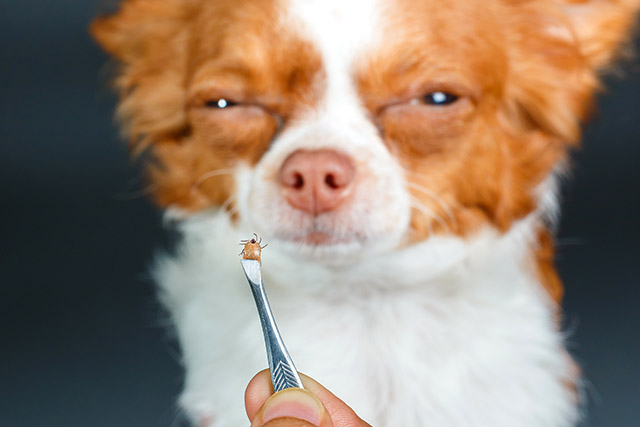Cat and dog tick paralysis
Tick paralysis season is looming for dogs and cats!
Paralysis ticks are on the rise again, but with changes in weather patterns these deadly parasites are increasingly common in autumn and winter too. Luckily, tick prevention treatments are now incredibly effective.
Cases of tick paralysis in dogs and cats have a predictable spike during spring and summer so if your pet doesn’t already have year-round protection against paralysis tick now is the time to talk to your vet about preventatives and get familiar with the signs. It might just save their life!
Signs of tick paralysis include:
- Wobbliness and lack of muscle control, typically starting with the back legs before spreading to the rest of the body
- Increased breathing rate or effort
- Panting, hacking and retching
- Drooling, regurgitating and vomiting because of weakness in the throat and oesophagus
- Different sounding bark/meow because of weakness in the vocal cords
- In severe cases, breathing muscles become paralysed so the chest may move less and the abdomen move more to try to compensate
- Gums only appear blue or grey as oxygen levels are almost completely depleted but can still be dangerously low while gums are pink
If any of the above signs are seen, take your pet to the vet straight away! Do NOT delay vet care if early signs are seen. Weakness progresses rapidly to complete collapse with breathing muscles becoming paralysed, stopping breathing. Early detection and treatment are vital!
If you find a tick on your pet:
- Remove the tick as quickly as possible and place it in a zip-lock bag or container. You can use a tick twister or tweezers if you prefer.
- If a tick is removed and no signs of paralysis are seen, call your vet for advice and keep your pet quiet, calm and at a comfortable temperature. Your vet will be able to identify the tick species and may recommend a physical exam to look for subtle signs of paralysis.
Removing the tick DOES NOT mean that your pet won’t exhibit clinical signs. The severity of clinical signs is dependent on how long the tick has been on your pet injecting its toxins.
Delays in your pet receiving medical care will have a strong impact on their recovery and outcome. In some cases, it can take up to 24-36 hours after tick removal for a pet to show obvious clinical signs. This is a valuable window where subtle signs could have been picked up and treatment already been started.
Tick prevention checklist:
- Check your pet for ticks every day, this can be as easy as giving your much-loved pet a full body pat/massage. Don’t forget to look in ears, around lips and between toes. If your pet has a very long coat, consider keeping their coat short. If you find a bump, stop and check if it is a tick.
- Use registered tick control products, such as chewable tablets, collars, topical liquids and sprays. Isoxazoline products such as Bravecto (dog and cat options) and Nexgard (dog and cat options) are highly effective when used correctly. Check your product is registered for paralysis tick control (Ixodes holocyclus) and not just brown dog ticks and fleas.
- Use the product at the correct frequency for paralysis tick This may be different to the frequency for other tick or flea control. Set personal reminders for the frequency required by your tick prevention using your smartphone, paper calendar and/or diary.
- Ensure that you are giving your pet the correct dose of tick control for their weight.
- If you are treating a cat, double check that the product that you use is registered for use in cats. Don’t use dog products on cats as they may be toxic.
In the long run, prevention saves you more than just money, it saves putting yourself and your pet through what can be an intensive medical ordeal and recovery period with some pets dying despite aggressive treatment.
Prevention is the best first step we can take for our pets. If you find a tick on your pet and are unsure when their last preventative was given, the safest thing to do is contact your vet.

